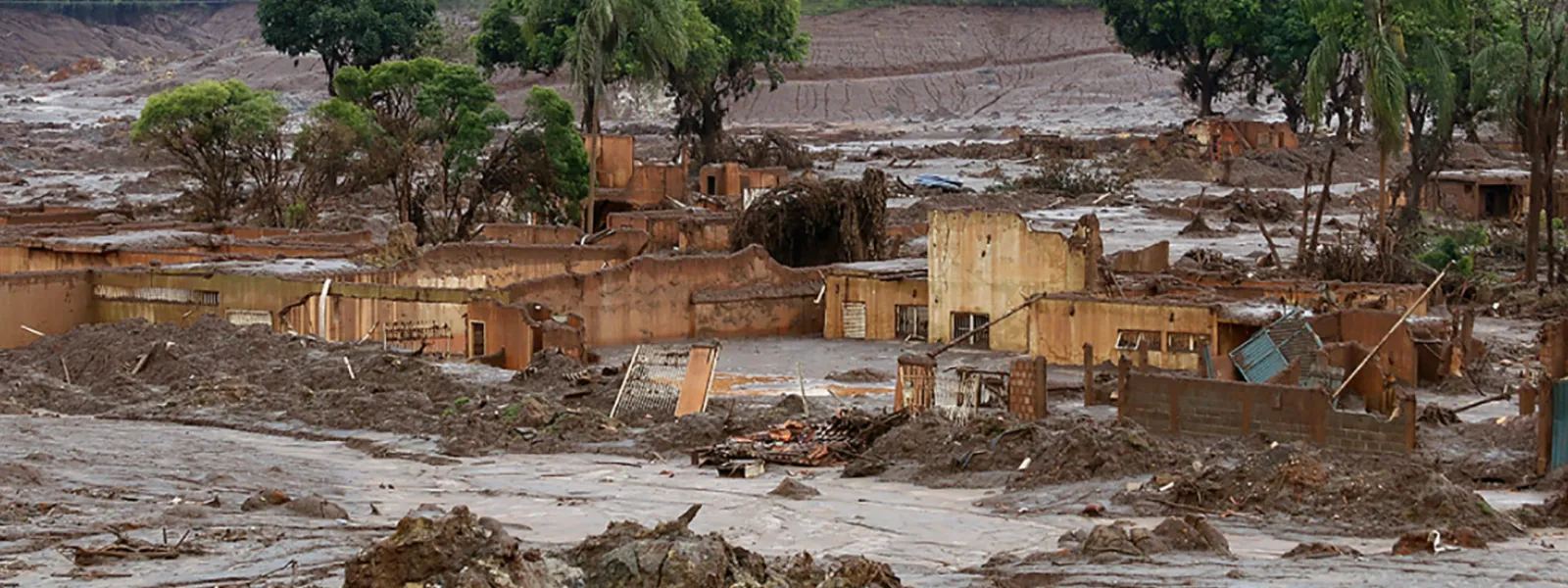
Mine tailings dams: a history of failures
Photo: Rogério Alves / TV Senado (CC BY 2.0).Once again, tragedy looms over Brazil.
Last Friday, for the second time in less than four years, a tailings dam broke in the State of Minas Gerais—this time in the municipality of Brumadinho—leaving catastrophic human and environmental damage in its wake.
Once again, the losses are incalculable.
We’re faced with disappearances and death. We see the same, disconcerting images: survivors evacuated by helicopter; trees, animals, and homes covered in toxic sludge; a swollen river carrying mining waste downstream.
Once again, nature and society have been damaged, torn apart.
As if in an endless loop, the tragedy has repeated in Minas Gerais. Five similar incidents, at least of which there is evidence, occurred in 1986, 2001, 2007, 2014, and 2015.
The tragedy in November 2015 in the city of Mariana is considered the worst environmental disaster in the history of Brazil. It destroyed the town of Bento Rodrigues and contaminated the Doce River basin, carrying toxic sludge all the way to the Atlantic Ocean.
A tragic cycle
Far from isolated events, the failures of mine tailings dams have become a common occurrence, and statistics suggest we can expect many more in the future.
Like any infrastructure work, a dam has a certain useful life—a period of operation with a firm beginning and end. That period is based on the dam having adequate design, execution, and maintenance, something that often does not occur.
Thanks to the World Information Service on Energy’s Uranium Project, we know that over the last 30 years there have been 73 accidents or incidents involving mine tailings dams worldwide. The United States (17), China (8) and the Philippines (7) lead the list of affected countries.
The project’s database offers an account of the main accidents and indicators including breakdowns, overshoots, collapses, partial failures, and lining ruptures. These figures should lead us to reflect on large-scale mining, particularly metal mining, which requires these types of dams and impoundments.
Instead of continuing to build mines, wouldn’t it be better to concentrate our efforts on recovering and reusing the metal we discard?
When will we transition to a circular economy that avoids such catastrophes?
How many more disasters can our ecosystems and our human populations endure?
Quite often, affected communities do not have objective or sufficient information about the benefits and harms of the mining projects proposed near their homes. Breaking that information gap is urgent.
At AIDA we contribute to this task by providing useful information about the potential harms of mining, and using it to strengthen legal actions undertaken to protect people and the environment.
It’s urgent that the governmental, non-governmental and private sectors do whatever is necessary to avoid more tragedies like those we’ve seen in Brazil. They must make a conscious decision to put the value of people and nature above profit.
For more information, consult the database of major tailings dam failures: http://www.wise-uranium.org/mdaf.html
73 tailings dams have failed over the last 30 years, wreaking havoc on the environment and affected communities: https://t.co/G6xZibNIAk
— AIDA Americas (@AIDAorg) January 28, 2019
How many more avoidable disasters can we endure? #MinasGerais #BrumadinhoSOS #ValeAssassina #mining pic.twitter.com/ceuNTUUpkL
Andrés Ángel

Andrés Ángel collaborated with AIDA as a scientific advisor. He has a Bachelor's degree in geology and a Master's degree in Public Policy with an emphasis on GeoGovernance from the University of Potsdam, Germany; his studies there were carried out through a DAAD scholarship. Andrés has experience as a researcher in diverse socioecological conflicts and territorial defense processes, primarily those related to neo-extractivism. He has also worked in the public sector of Colombia in environmental control.
